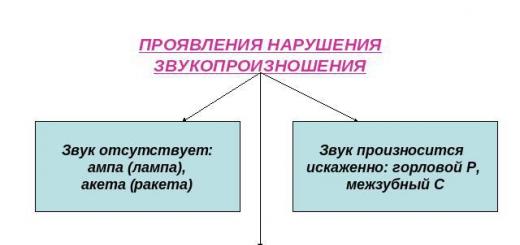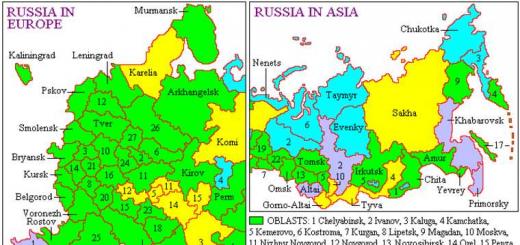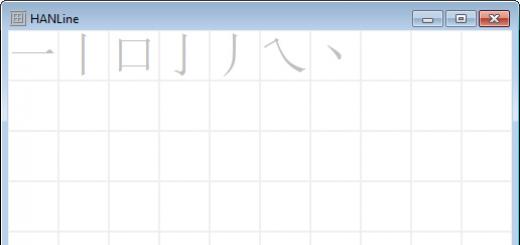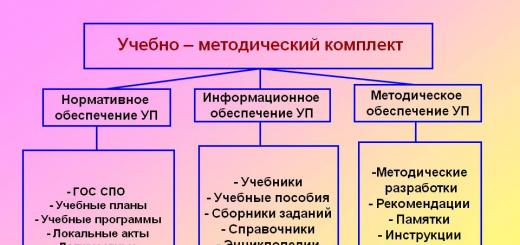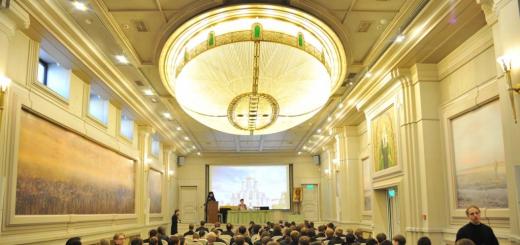Hundreds of thousands of earthquakes occur on our planet every year. Most of them are so small and insignificant that only special sensors can detect them. But there are also more serious fluctuations: twice a month the earth’s crust shakes violently enough to destroy everything around it.
Since most tremors of such force occur at the bottom of the World Ocean, unless they are accompanied by a tsunami, people are not even aware of them. But when the land shakes, the disaster is so destructive that the number of victims runs into the thousands, as happened in the 16th century in China (more than 830 thousand people died during earthquakes of magnitude 8.1).
Earthquakes are underground tremors and vibrations of the earth's crust caused by natural or artificially created causes (movement of lithospheric plates, volcanic eruptions, explosions). The consequences of high-intensity tremors are often catastrophic, second only to typhoons in terms of the number of victims.
Unfortunately, at the moment, scientists have not studied the processes that occur in the depths of our planet so well, and therefore the forecast of earthquakes is rather approximate and inaccurate. Among the causes of earthquakes, experts identify tectonic, volcanic, landslide, artificial and man-made vibrations of the earth's crust.
Tectonic
Most of the earthquakes recorded in the world arose as a result of movements of tectonic plates, when a sharp displacement of rocks occurs. This can be either a collision with each other, or a thinner plate being lowered under another.
Although this shift is usually small, amounting to only a few centimeters, the mountains located above the epicenter begin to move, releasing enormous energy. As a result, cracks form on the earth's surface, along the edges of which huge areas of the earth begin to shift, along with everything that is on it - fields, houses, people.
Volcanic
But volcanic vibrations, although weak, continue for a long time. Usually they do not pose any particular danger, but catastrophic consequences have still been recorded. As a result of the powerful eruption of the Krakatoa volcano at the end of the 19th century. the explosion destroyed half the mountain, and the subsequent tremors were so powerful that they split the island into three parts, plunging two-thirds into the abyss. The tsunami that arose after this destroyed absolutely everyone who had managed to survive before and did not have time to leave the dangerous territory.








Landslide
It is impossible not to mention landslides and large landslides. Usually these tremors are not severe, but in some cases their consequences can be catastrophic. So, it happened once in Peru, when a huge avalanche, causing an earthquake, came down from Mount Ascaran at a speed of 400 km/h, and, having leveled more than one settlement, killed more than eighteen thousand people.
Technogenic
In some cases, the causes and consequences of earthquakes are often related to human activities. Scientists have recorded an increase in the number of tremors in areas of large reservoirs. This is due to the fact that the collected mass of water begins to put pressure on the underlying earth’s crust, and water penetrating through the soil begins to destroy it. In addition, an increase in seismic activity has been noticed in oil and gas production areas, as well as in the area of mines and quarries.
Artificial
Earthquakes can also be caused artificially. For example, after the DPRK tested new nuclear weapons, sensors recorded moderate earthquakes in many places on the planet.
An undersea earthquake occurs when tectonic plates collide on the ocean floor or near the coast. If the source is shallow and the magnitude is 7, an underwater earthquake is extremely dangerous because it causes a tsunami. During the shaking of the sea crust, one part of the bottom falls, the other rises, as a result of which the water, in an attempt to return to its original position, begins to move vertically, generating a series of huge waves moving towards the coast.


Such an earthquake together with a tsunami can often have catastrophic consequences. For example, one of the most powerful seaquakes occurred several years ago in the Indian Ocean: as a result of underwater tremors, a large tsunami arose and, hitting the nearby coasts, led to the death of more than two hundred thousand people.
The tremors begin
The source of an earthquake is a rupture, after the formation of which the earth's surface instantly shifts. It should be noted that this gap does not occur immediately. First, the plates collide with each other, resulting in friction and energy that gradually begins to accumulate.
When the stress reaches its maximum and begins to exceed the frictional force, the rocks rupture, after which the released energy is converted into seismic waves moving at a speed of 8 km/s and causing vibrations in the earth.


The characteristics of earthquakes based on the depth of the epicenter are divided into three groups:
- Normal – epicenter up to 70 km;
- Intermediate – epicenter up to 300 km;
- Deep-focus - the epicenter at a depth exceeding 300 km, typical of the Pacific Rim. The deeper the epicenter, the further the seismic waves generated by the energy will reach.
Characteristic
An earthquake consists of several stages. The main, most powerful shock is preceded by warning vibrations (foreshocks), and after it, aftershocks and subsequent tremors begin, and the magnitude of the strongest aftershock is 1.2 less than that of the main shock.
The period from the beginning of foreshocks to the end of aftershocks may well last several years, as, for example, happened at the end of the 19th century on the island of Lissa in the Adriatic Sea: it lasted three years and during this time scientists recorded 86 thousand tremors.
As for the duration of the main shock, it is usually short and rarely lasts more than a minute. For example, the most powerful shock in Haiti, which occurred several years ago, lasted forty seconds - and this was enough to turn the city of Port-au-Prince into ruins. But in Alaska, a series of tremors were recorded that shook the earth for about seven minutes, with three of them leading to significant destruction.


Calculating which shock will be the main one and will have the greatest magnitude is extremely difficult, problematic, and there are no absolute methods. Therefore, strong earthquakes often take the population by surprise. This, for example, happened in 2015 in Nepal, in a country where mild tremors were recorded so often that people simply did not pay much attention to them. Therefore, a ground shaking with a magnitude of 7.9 led to a large number of victims, and the weaker aftershocks with a magnitude of 6.6 that followed it half an hour later and the next day did not improve the situation.
It often happens that the strongest tremors occurring on one side of the planet shake the opposite side. For example, the 2004 magnitude 9.3 earthquake in the Indian Ocean relieved some of the increasing stress on the San Andreas Fault, which is located at the junction of lithospheric plates along the California coast. It turned out to be so strong that it slightly modified the appearance of our planet, smoothing out its bulge in the middle part and making it more rounded.
What is magnitude
One way to measure the amplitude of oscillations and the amount of energy released is the magnitude scale (Richter scale), containing arbitrary units from 1 to 9.5 (it is very often confused with a twelve-point intensity scale, measured in points). An increase in the magnitude of earthquakes by just one unit means an increase in the amplitude of vibrations by ten, and energy by thirty-two times.
The calculations showed that the size of the epicenter during weak vibrations of the surface, both in length and vertically, is measured in several meters, when of average strength - in kilometers. But earthquakes that cause disasters have a length of up to 1 thousand kilometers and extend from the rupture point to a depth of up to fifty kilometers. Thus, the maximum recorded size of the epicenter of earthquakes on our planet was 1000 by 100 km.


The magnitude of earthquakes (Richter scale) looks like this:
- 2 – weak, almost imperceptible vibrations;
- 4 - 5 - even though the shocks are weak, they can lead to minor damage;
- 6 – medium damage;
- 8.5 - one of the strongest recorded earthquakes.
- The largest is considered to be the Great Chilean earthquake with a magnitude of 9.5, which generated a tsunami that, having crossed the Pacific Ocean, reached Japan, covering 17 thousand kilometers.
Focusing on the magnitude of earthquakes, scientists claim that out of the tens of thousands of vibrations that occur on our planet per year, only one has a magnitude of 8, ten - from 7 to 7.9, and a hundred - from 6 to 6.9. It must be taken into account that if the earthquake magnitude is 7, the consequences can be catastrophic.
Intensity scale
To understand why earthquakes occur, scientists have developed an intensity scale based on external manifestations such as the impact on people, animals, buildings, and nature. The closer the epicenter of earthquakes is to the earth's surface, the greater the intensity (this knowledge makes it possible to give at least an approximate forecast of earthquakes).
For example, if the magnitude of the earthquake was eight and the epicenter was at a depth of ten kilometers, the intensity of the earthquake would be between eleven and twelve. But if the epicenter was located at a depth of fifty kilometers, the intensity will be less and will be measured at 9-10 points.


According to the intensity scale, the first destruction can occur already with magnitude six shocks, when thin cracks appear in the plaster. An earthquake of magnitude 11 is considered catastrophic (the surface of the earth's crust becomes covered with cracks and buildings are destroyed). The strongest earthquakes, capable of significantly changing the appearance of the area, are estimated at twelve points.
What to do during earthquakes
According to rough estimates by scientists, the number of people who have died in the world due to earthquakes over the past half-millennium exceeds five million people. Half of them are in China: it is located in a zone of seismic activity, and a large number of people live on its territory (830 thousand people died in the 16th century, 240 thousand in the middle of the last century).







Such catastrophic consequences could have been prevented if earthquake protection had been well thought out at the state level, and the design of buildings had taken into account the possibility of strong tremors: most people died under the rubble. Often, people living or staying in a seismically active zone do not have the slightest idea of how exactly to act in an emergency situation and how to save their lives.
You need to know that if tremors catch you in a building, you need to do everything possible to get out into the open space as quickly as possible, and you absolutely cannot use elevators.
If it is impossible to leave the building, and the earthquake has already begun, leaving it is extremely dangerous, so you need to stand either in the doorway, or in a corner near a load-bearing wall, or crawl under a strong table, protecting your head with a soft pillow from objects that may fall from above. After the tremors are over, the building must be left.
If a person finds himself on the street during the onset of earthquakes, he needs to move away from the house by at least one third of its height and, avoiding tall buildings, fences and other buildings, move towards wide streets or parks. It is also necessary to stay as far as possible from downed electrical wires of industrial enterprises, since explosive materials or toxic substances may be stored there.
But if the first tremors caught a person while he was in a car or public transport, he urgently needs to leave the vehicle. If the car is in an open area, on the contrary, stop the car and wait out the earthquake.
If it so happens that you are completely covered in debris, the main thing is not to panic: a person can survive without food and water for several days and wait until they find him. After catastrophic earthquakes, rescuers work with specially trained dogs, and they are able to smell life among the rubble and give a sign.
It is estimated that millions of people are registered on our planet every year. earthquakes. Of course, the vast majority of them are not felt by people; many do not cause serious damage, but several times a year the planet “shakes in a big way”, the news of which immediately spreads across news channels. Unfortunately, journalists often make mistakes when using scientific terms in their reports. One of them will be discussed in this article.
All reports of seismic disasters are usually accompanied by words like “... an earthquake measuring 6.9 on the Richter scale occurred.” This formulation is incorrect. Interestingly, this kind of error can also be found in some educational literature.
Typically, in popular scientific descriptions of earthquakes, two common terms appear: earthquake magnitude and magnitude.
Earthquake magnitude characterizes the intensity of ground shaking during an earthquake (sometimes they say “earthquake intensity”). It is assessed on a special scale. The first of them appeared in the second half of the 19th century. In 1902 it was developed Mercalli-Cancani scale, long considered one of the best. It is outdated and is not used today, but it was on its basis that almost all modern 12-point scales were created, including the most common one today international Medvedev-Sponheuer-Karnik scale (MSK-64). It is used to estimate the intensity of earthquakes in most countries of the world. You can see a brief explanation of this scale in the table.
|
Not felt by people, recorded by devices |
|
|
It is recorded by instruments and is felt in some cases by people in a calm state and on the upper floors of buildings |
|
|
Few people notice fluctuations |
|
|
Oscillations are noted by many people, glass rattling is possible |
|
|
Vibrations are observed even on the street, many sleepers wake up, individual objects sway |
|
|
Cracks appear in buildings |
|
|
There are cracks in the plaster and walls, people are leaving their houses in panic. Heavy objects may fall |
|
|
Large cracks in walls, falling eaves and chimneys |
|
|
Collapses in some buildings. |
|
|
Cracks in the ground (up to 1 m wide) Collapses in many buildings, complete destruction of old buildings |
|
|
Numerous cracks on the surface of the earth, landslides in the mountains. Building destruction |
|
|
Complete destruction of all structures, serious changes in terrain |
|
|
Table 1. A brief explanation of the MSK-64 scale. A more detailed description includes three separate criteria: people’s sensations, impact on structures, impact on terrain |
|
There are other scales. For example, in Latin American countries they use ten-point Rossi-Forel scale, created in 1883. In Japan they use 8-point Japan Meteorological Agency scale. For a comparison of the three most common scales, see diagram 1.
The intensity of an earthquake usually decreases as it moves away from the epicenter.
Earthquake Magnitude characterizes the total energy of seismic vibrations of the earth's surface. Magnitude is defined as “the logarithm of the ratio of the maximum wave amplitudes of a given earthquake to the amplitudes of the same waves of some standard earthquake” (the magnitude of a “standard earthquake” is taken as 0). The magnitude scale was first proposed in 1935 by C. Richter, which is why people still often talk about "magnitude on the Richter scale", which is inaccurate. The Richter scale approximates modern formulas for calculating magnitude, but is not currently used.
A change in magnitude by one means an increase in the amplitude of oscillations by 10 times and an increase in the amount of released energy by 32 times.
Unlike intensity, magnitude has no unit of measurement - it is denoted by a whole number or a decimal fraction, so saying "magnitude 6.9" is incorrect. Intensity is determined by subjective indicators: people’s feelings, damage to structures, changes in terrain, while the determination of magnitude is based on strict physical and mathematical calculations. We can draw the following analogy: the magnitude of an earthquake is the offhand estimated force of the explosion (determined by external manifestations), and the magnitude is the power of the explosive device. However, it should be remembered that magnitude is not an absolute value of earthquake energy, it is just a relative characteristic. To determine the actual energy of an earthquake based on its magnitude, a special formula is used.
It is estimated that the energy of a magnitude 7.2 earthquake corresponds to the energy of the explosion of a megaton atomic bomb. The most powerful earthquake in the entire history of observations occurred in 1960 in Chile, its magnitude was 9.5 (according to the magazine Around the World and Wikipedia). In many sources you can find other information: the magnitude of the largest earthquake was about 8.9-9.0. Most likely, these differences are associated with inaccuracies in calculations (the error in determining the magnitude can reach 0.25).
Another interesting question: are there any limitations to the magnitude scale? There are no mathematical ones, but there is some physical limit to the energy of an earthquake on our planet. Unfortunately, it was not possible to find any references to such studies. If you manage to come across such information, please let us know by sending a letter to This email address is being protected from spambots. You must have JavaScript enabled to view it. .
As for another type of earthquakes, which also occur occasionally - earthquakes caused by the fall of meteorites, asteroids and other cosmic bodies to the Earth, the research results here are very disappointing. Astronomers estimate that the magnitude of the earthquake caused by the impact of a large asteroid could be 13, meaning its energy would be a million times greater than the energy of the largest known earthquake. But this event is still unlikely, so, most likely, by the time such a threat looms, humanity will be ready to prevent it.
Thus, the following conclusions can be drawn. The example of a typical message placed at the beginning of the article is a classic example of a mishmash of terms. It's correct to say this:
“An earthquake of magnitude 6.9 occurred,”
or, if we are talking about points
“An earthquake with an intensity of 8 points (on the MSK-64 scale) occurred.”
In conclusion: Are earthquakes possible in the Urals? The answer is simple: possible. Despite the fact that the Ural Mountains are old, and their territory does not belong to seismic belts, tectonic movements of the earth’s crust are still preserved here. Seismologists annually record up to five earthquakes of magnitude 2-3 in the Urals. The strongest earthquake in the Urals happened less than a century ago in 1914, its magnitude was about 7 points. According to the seismic zoning map of the world (
Richter scale was invented to determine the strength of earth vibrations. In other words, it will help us determine the power of earthquakes. This system is international. It was invented by the Italian Mercalli. Who was Richter and why did he get all the laurels?
History of the Richter scale
Richter earthquake scale developed in the thirties of the twentieth century. The Mercalli system was not only renamed, but also completed. The Italian used a 12-point scale as a basis. The minimum tremors were equal to one.
Earthquakes of magnitude 6 or higher were considered strong. Not all states agreed with this. In Russia, for example, they used a 10-point scale, and in Japan, a 7-point scale. But in the age of globalization, everything has changed.
A common standard was needed, and the data from all seismographs could be deciphered anywhere on Earth. This is where Charles Richter got down to business. The American began to use the decimal logarithm.
The measurement of the amplitude of the oscillations was directly proportional to the change in the needle on the seismograph. Richter also made adjustments depending on the distance of the area from the epicenter of the earthquake.
Richter magnitude scale was officially registered in 1935. The world began to focus not only on 10 points, but also on the difference of ten points between adjacent marks on the ruler.
A 2-magnitude earthquake is considered 10 times stronger than a 1-magnitude one, and 3-magnitude tremors are 10 times more powerful than 2-magnitude ones, and so on. But how to determine the strength of shocks? How to find out and determine that the movements of the earth’s crust are exactly 3, 7, 9-point?
Richter scale - scores in visual and physical manifestations

The scores will help us measure the frequency of surface tremors. Their power in the bowels of the Earth, where the fault occurred, is greater. Part of the energy leaves on the way to the solid crust of the planet. This means that the closer the source is to the surface, the greater the power. People don't feel one point.
Two points will be felt only by residents of the upper floors of high-rise buildings, feeling weak vibrations. At three points the chandeliers swing. Perceptible shaking inside buildings, even small ones, is four points.
And five-magnitude earthquakes are felt not only in houses, but also on the streets. At six points, glass may crack, furniture and dishes may move. It becomes difficult to stand on your feet during a magnitude 7 earthquake. Cracks spread along brick walls, flights of stairs can be destroyed, and landslides occur on roads.
With eight points, buildings can be destroyed, as well as communications located underground can be torn. Nine-magnitude tremors lead to disturbances on the water and can cause a tsunami. The soil is cracking.
It crushes and breaks it during magnitude 10 earthquakes. Eleven points... Stop. After all, the Richter scale ends at ten. In fact of the matter. Gaps in people's knowledge led to the mixing of the Mercalli and Richter systems.
The surface intensity of the tremors was measured in points using the Italian scale. She, apparently, did not disappear, but unofficially joined the American one. Mercalli has both 11 and 12 points.
At 11, brick buildings will be destroyed to the ground, and roads will also remain only a memory. 12 points is a catastrophic earthquake that changes the topography of the earth. The cracks in it reach a width of 10-15 meters.
What do the marks on the true Richter scale tell us? It is based on magnitude, which Mercalli did not take into account. Magnitude measures the energy released during movements in the earth's interior. They consider not the external manifestations of an earthquake, but their internal essence.
Richter scale - magnitude table
While it is possible to determine the scores by observing changes on the surface of the planet, the magnitude is measured only using seismograph readings. The calculation is based on the type of waves of a typical, average earthquake.
The indicator is put in a logarithm with the maximum amplitude of specific shocks. Magnitude is proportional to this logarithm.
Thanks to modern technologies, scientists have been able to calculate how many earthquakes occur on our planet every year. There are more than a million of them recorded. Most of them are not felt by people due to their low magnitude, but there are those that become a real disaster.
What is the magnitude of earthquakes and how is it measured? How do scientists determine which events will cause damage and which will go unnoticed?
Magnitude
Scientists have developed special scales that measure the strength of tremors. To understand what the magnitude of an earthquake is, it is necessary to become familiar with the measurement values of this phenomenon.
There are several types of scales: Mercalli - Cancani, Medvedev - Sponheuer - Karnik, Richter. Thanks to them, it is clear what magnitude is. It is a number that can be measured against a specific benchmark. During the next earthquake, it is customary to talk about the severity and magnitude.
Magnitude scale
For a long time, the Mercalli-Cancani grid was considered the very first scale. Nowadays, it is an outdated model, so the value of tremors is not measured with it.
However, on its basis, all modern methods for assessing the force of impacts have been developed, including the international scale MSK 64 (Medvedev - Sponheuer - Karnik). It is taken in most countries of the world to analyze the intensity of the phenomenon.

MSK 64
This rating system is represented by a twelve-point scale. From it you can find out what characterizes the magnitude of an earthquake:
- 1 point. Such phenomena are not felt by people, but they are recorded by devices.
- 2 points. In some cases they can be observed by people, most often on the upper floors of buildings.
- 3 points. The shocks are noticeable to those with high sensitivity.
- Earthquake 4 points. Glass rattling is noted.
- 5 points. It is considered a fairly noticeable earthquake, during which individual objects can sway.
- 6 points. Formation of cracks in buildings.
- 7 points. Heavy objects may fall. Large cracks appear in the walls of buildings.
- 8 points. Houses are partially collapsing.
- 9 points. Buildings and other structures are collapsing.
- 10 points. Deep cracks appear in the ground, old buildings are completely destroyed.
- 11 points. Numerous cracks appear on the surface of the earth, and landslides occur in the mountains. The buildings are completely destroyed.
- 12. The relief is seriously changing, and buildings are completely destroyed.
Richter rating system
In 1935, scientist C. Richter suggested that magnitude is the energy of seismic waves. Based on this statement, he developed a special scale, which is still used to assess shaking activity.

The Richter magnitude scale characterizes the amount of energy released during seismological activity. It uses a logarithmic scale, with each value indicating a shock ten times larger than the previous one. For example, if a magnitude 4 earthquake is recorded, the phenomenon will cause a ten times stronger vibration than a magnitude 3 earthquake on the same scale.
According to Richter, seismological activity is measured as follows:
1.0-2.0 - fixed by instruments;
2.0-3.0 - weak sensations of tremors;
3.0 - chandeliers in houses sway;
4-5 - shocks are weak, but can cause minor damage;
6.0 - tremors capable of causing moderate destruction;
7 - it is difficult to stand on your feet, cracks begin to appear along the walls, flights of stairs may collapse;
8.5 - very strong earthquakes that can cause changes in relief.
9 - causes a tsunami, the soil cracks severely.
10 - the depth of the fault is one hundred or more kilometers.
Earthquakes in history
One of the most powerful earthquakes in the world was the seismological activity recorded in 1960 in Chile. On the Richter scale, the instruments indicated significant activity. Then the Chileans learned what a magnitude of 8.5 was. The tremors caused a tsunami with waves ten meters high.
Four years later, in the northern part of the Gulf of Alaska, earthquakes with a magnitude of 9 were recorded. Due to this plate activity, the coastlines of some islands have changed greatly.

Another powerful earthquake occurred in 2004 in the Indian Ocean. On the Richter scale it is assigned 9 points. The tremors caused a powerful tsunami with a wave height of more than fifteen meters.
In 2011, an earthquake occurred in Japan, which caused a huge tragedy: thousands of people died and a nuclear power plant was destroyed.
Unfortunately, such disasters are not very rare. Scientists do not yet know how to prevent earthquakes.
Earthquakes vary in strength and impact on the earth's surface. And science has repeatedly attempted to classify them according to these indicators.
As a result of such attempts, 12-point scales were developed, based on an assessment of their impact on the earth's surface.
12-point scale for assessing the intensity of earthquakes (hereinafter earthquake scale) estimates the intensity of an earthquake in points at a given point, regardless of its power at the epicenter.
Richter scale has a different approach and estimates the amount of seismic energy released at the epicenter of an earthquake. The unit of seismic energy is magnitude.
12 point earthquake scale.
In 1883, 12 ball earthquake scale was designed by Giuseppe Mercali. Later it was improved by the author himself, and subsequently also by Charles Richter (the author of the Richter scale) and was called the Modified Mercalli Earthquake Scale.
This earthquake scale is currently used in the United States.
In the USSR and Europe, the 12-point earthquake scale - MSK-64 - was used for a long time. According to it, as well as the Mercalli earthquake scale, their intensity is measured in points indicating the intensity, nature and scale of the impact on the surface of the earth, buildings, people and animals in a given area.

The MSK-64 earthquake scale is very clear. And if we hear in the media that an earthquake with a magnitude of 6 occurred, we can very easily imagine that, according to this earthquake scale, it was strong and was felt by all people. Many of them ran out into the street. Pieces of plaster fell off and paintings fell from the walls.
Or a 9.0 magnitude earthquake can be imagined as devastating, in which stone houses were damaged and destroyed, and wooden houses were knocked down.
Everything is simple and clear.
It should be noted that according to the earthquake scale, their intensity is assessed at a certain point. It is clear that at the epicenter located above the source of the earthquake and at a distant point its intensity will be different.
In 1988, the European Seismic Committee began updating the MSK-64 earthquake scale and in 1996, an updated earthquake scale called EMS-98, along with a manual for use, was recommended for use. This earthquake scale is also 12 point and has no fundamental differences with other earthquake scales.
In Japan, the earthquake scale of the Japan Meteorological Agency is used. It starts at three points when people begin to feel the points.
It describes in separate columns the impact on people, on the environment inside buildings and on the street. The highest rating on this earthquake scale is 7.
It is also not fundamentally different from other scales.
Richter scale. Magnitude.
Often, including in the media, you can hear about an earthquake occurring somewhere with a force of, for example, 6 points on the Richter scale.
This is not true. The Richter scale does not describe the intensity of an earthquake, expressed in points, but a completely different characteristic, expressed in other units.
The Richter scale estimates the amount of released seismic energy at the epicenter based on the amplitude of soil vibrations measured by instruments that reached the measurement point. This value is expressed in magnitude.
Richter himself defined the magnitude of any shock as: “the logarithm, expressed in microns, of the amplitude of the recording of this shock made by a standard short-period twisting seismometer at a distance of 100 kilometers from the epicenter.”
Magnitude calculated after measuring the amplitude on the seismogram. And when making calculations, it is necessary to make corrections: for the depth of the earthquake source, for the fact that the measurements were carried out with a non-standard seismometer. It is necessary to bring the calculations to those measured at a standard distance of 100 km from the epicenter.
This is not an easy calculation. And due to the listed difficulties, magnitude values produced by different sources may differ slightly.
But in general, they will give an objective assessment of the power of the earthquake.
Therefore, it would be correct to say that an earthquake with a magnitude of, say, -5 on the Richter scale occurred in a certain place.
Magnitude, calculated at different points on the Richter scale will have the same value. The intensity of the shocks in points at different points will be different.
This is the difference between the 12-point earthquake scale and the 9.5-point Richter scale, expressed in magnitude (the Richter scale has a range of 1 - 9.5 magnitude).
You should not confuse (and this happens all the time in the media) the concepts of the Richter scale and the 12-point earthquake scale.
The intensity on the Richter scale is determined immediately from the readings of seismographs. The intensity in points is determined later, based on an assessment of the impact on the earth's surface. Therefore, the very first reports on assessing the power of shocks come precisely on the Richter scale.
How to correctly report the intensity of tremors in magnitude on the Richter scale?
The correct usage is “an earthquake of magnitude 7 on the Richter scale.”
Previously, due to an oversight, the incorrect expression was used - “an earthquake of 7 points on the Richter scale.”
Or it’s also incorrect - “an earthquake of magnitude 7 on the Richter scale” or “magnitude 7 on the Richter scale.”
The Richter scale describes the power of tremors at the epicenter, regardless of conditions, and introduces a unit of measurement for the power of tremors - magnitude. Other scales describe their impact on the surface in different places depending on conditions, soils, rocks, distance from the epicenter, etc.
For this reason Richter scale is the most objective and scientifically based.
Richter scale(joke)



